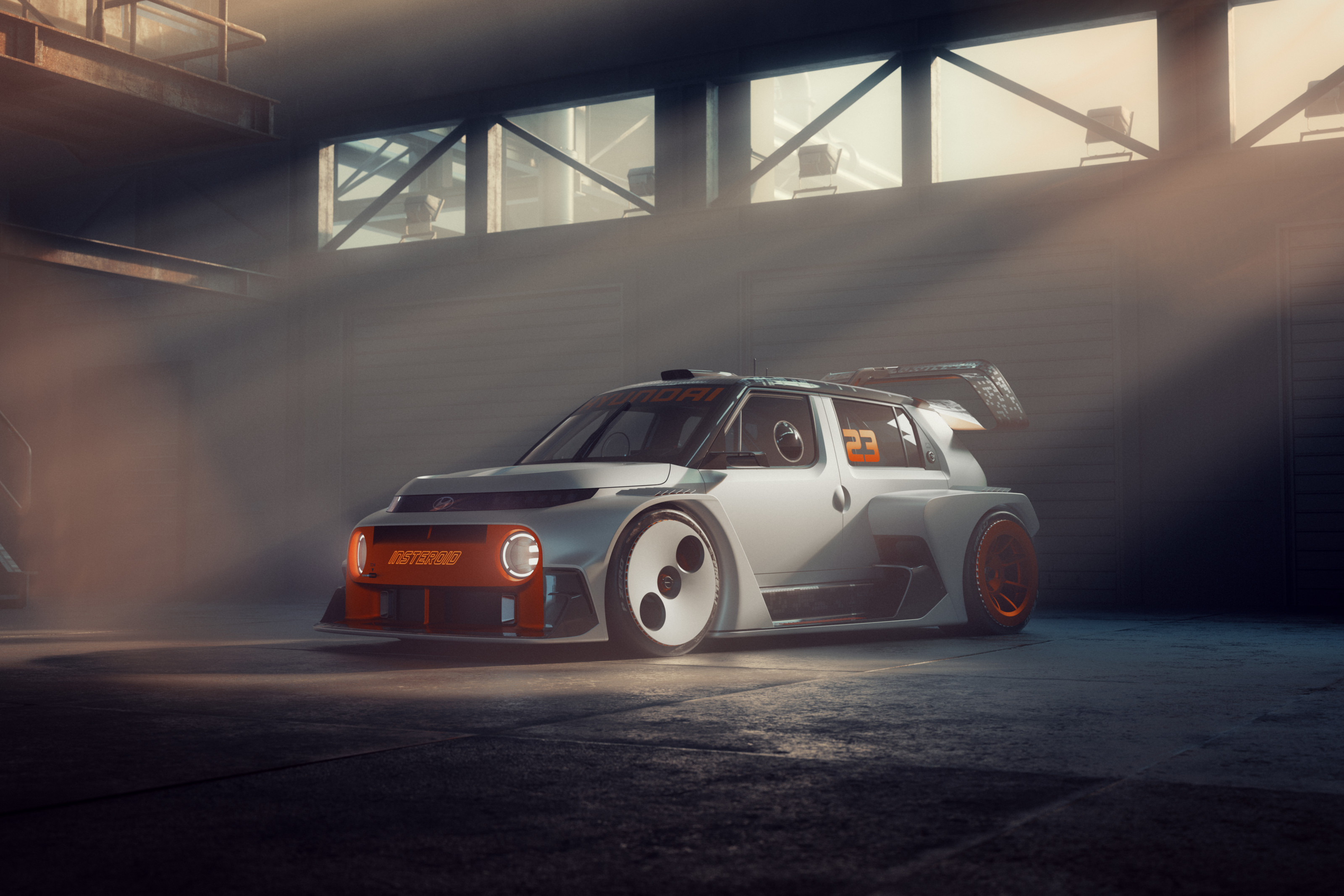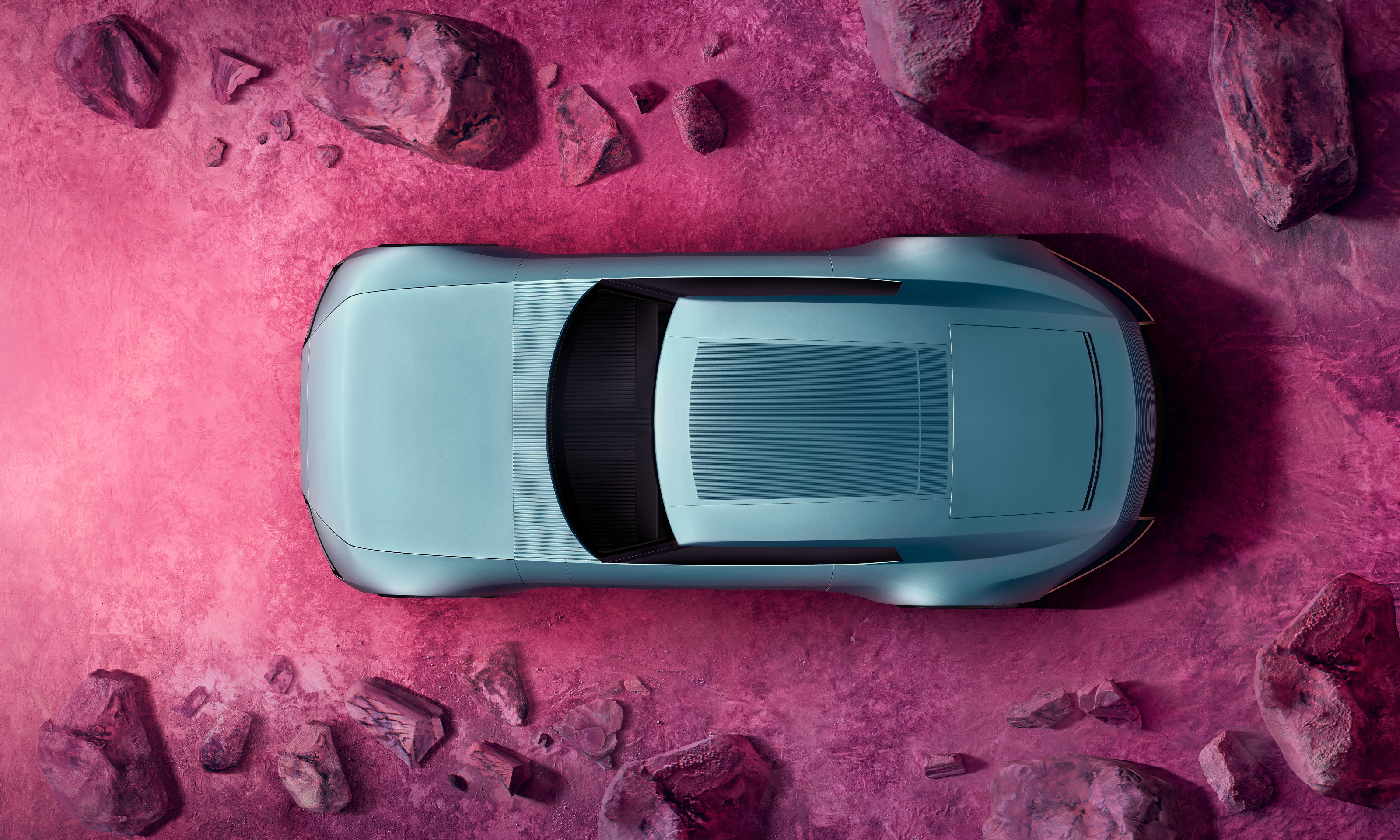The Spartan Tesla 3 breaks from traditional car design tropes

Whatever you think of the self-promotion, ill-advised Twitter spats and intergalactic ambitions of Elon Musk, Tesla has undoubtedly hired some of the best people in the car industry. Freed from the bonds of brand expectations and design heritage that straitjackets so much contemporary car design and possessing seemingly bottomless funds, Tesla has stuck religiously to its strategy.
At a time when BMW is self-flagellating (recently ousting its CEO) for failing to capitalise on the colossal and expensive head start it created for itself in the form of the BMWi range, Tesla's much simpler plan is bearing fruit. Beginning with a proof of concept all-electric Roadster back in 2008, it previewed the Model S saloon in 2009 and launched the car to general acclaim in 2013. The S was, followed by the Model X (2015) and now we have the all-new Model 3, the company's first ‘affordable’ car. The Model 3 was heralded by a much-publicised scramble to place deposits to secure a car, swiftly followed by equally prominent production delays and quality problems as supply struggled to meet the promised demand. Now that American demand has been partly sated, the Model 3 can finally come to the right-hand drive market.

First impressions are excellent. The Model 3 is far more attuned to European tastes, certainly in terms of scale. It carries over the slightly blobby, nondescript styling language of its siblings, but that anonymity is a good match for the silent, stealthy, outsider ethos of the brand. Certainly, in the US you no longer drive a Tesla to stand-out, and although the cars (and charge stations) are rarer in Europe, they’re still relatively low-key.
Like all Teslas, the Model 3 delivers a combination of impressive performance and class-leading range. There’s a variety of battery options, which all have a corresponding effect on price, but this Performance model offers a 329-mile range and a supercar baiting 3.2 second 0-60 time. That effortless electric shove is by means unique to Tesla – it’s one of the great assets of a dedicated EV and the characteristic that sways buyers unlike any other. The cheaper Long Range version adds another second or so to the sprint time in return for an extra 20 miles worth of range (and a lower price), while the ‘entry level’ Standard Range Plus will still reach a decent turn of speed but only take you just over 250 miles between charges for around £20,000 less.

As you can see, it’s still all about the batteries; they make up the bulk of the weight and the cost, and driving an EV, even one as sophisticated as a Tesla, becomes just as much about what happens at the end of a journey than the travel time itself. Where can I charge? How long will it take? Where will I need to go next? Tesla’s battery management and energy-focused mapping is better than its rivals, but its dedicated Supercharger network is largely focused on European motorways, meaning you’re stuck with the slow and comparatively expensive on-street charge points (or your own power) in urban centres. Happily, the car comes with a full quota of sockets and cables to deal with almost any eventuality.
Lingering range anxieties aside (and these surely diminish with familiarity), the Model 3 is a superb car to drive. It handles well, with that big battery anchoring it to the road around corners. A number of driving styles can be dialed in, including one for indecent acceleration, but there's nearly as much fun to be had in nurturing the battery level by driving as efficiently as possible. The interior strips back everything to that big central screen, which sits atop the dash, rather than being shoehorned into it, as in the S and X. Having information out of your immediate line of sight required another adjustment (a head-up display would be a welcome addition), but that said, the system is almost peerless. Navigation, information, entertainment and car systems are easily activated and there are also a tranche of the company’s traditional Easter Eggs, including a suite of arcade games that might appease young passengers as they wait for the battery to be topped up. The ventilation system in particular is a masterpiece of minimalism – a slim vent that stretches across the dash and can be directed using the touchscreen. The accompanying app is one of the best available for any car and your smartphone doubles up as a key.

In comparison to its rivals, the Model 3 is a bit Spartan, inside and out, austere even, but this disconnect from the traditional tropes of car interior design – wood and leather, stitching, chrome, buttons and vents – only adds to the sense of futurism and game-changing evolution. The Model 3 can take on practically any traditional car in terms of driving ability and practicality, but it also serves equally well as an anonymous appliance, a machine for transportation without the cultural baggage of any of the conventional car brands.
Next year, the company launches the Model Y, a compact crossover that adds more functionality to the Model 3 platform with a taller body and a couple of extra seats. The company is unlikely to repeat the faux pas that dampened the initial ardour for the Model 3 (now by some considerable distance Tesla’s best-selling model), and providing the production lines have been finessed, the sales curve can only go upwards. In the third quarter of last year, Tesla sold nearly twice as many cars as Jaguar, and a hefty chunk more than Porsche.
It hasn’t all been plain sailing. Other companies are finally getting in on the act, although to date it’s only Jaguar that has exploited the ‘clean sheet of paper' approach that an EV platform offers, with its impressive I-Pace. Otherwise, mainstream opposition currently takes the form of slightly compromised multi-fuel platforms, which keep manufacturing costs down while preserving brand identity. Right now, this Tesla can be recommended without reservation, but the company's first real challenges lie on the road ahead.

INFORMATION
Tesla Model 3, from £36,490. tesla.com
Wallpaper* Newsletter
Receive our daily digest of inspiration, escapism and design stories from around the world direct to your inbox.
Jonathan Bell has written for Wallpaper* magazine since 1999, covering everything from architecture and transport design to books, tech and graphic design. He is now the magazine’s Transport and Technology Editor. Jonathan has written and edited 15 books, including Concept Car Design, 21st Century House, and The New Modern House. He is also the host of Wallpaper’s first podcast.
-
 Naoto Fukasawa sparks children’s imaginations with play sculptures
Naoto Fukasawa sparks children’s imaginations with play sculpturesThe Japanese designer creates an intuitive series of bold play sculptures, designed to spark children’s desire to play without thinking
By Danielle Demetriou
-
 Japan in Milan! See the highlights of Japanese design at Milan Design Week 2025
Japan in Milan! See the highlights of Japanese design at Milan Design Week 2025At Milan Design Week 2025 Japanese craftsmanship was a front runner with an array of projects in the spotlight. Here are some of our highlights
By Danielle Demetriou
-
 Tour the best contemporary tea houses around the world
Tour the best contemporary tea houses around the worldCelebrate the world’s most unique tea houses, from Melbourne to Stockholm, with a new book by Wallpaper’s Léa Teuscher
By Léa Teuscher
-
 2025 Seoul Mobility Show report: all that's new and notable
2025 Seoul Mobility Show report: all that's new and notableOpened at a time of high national drama, the 2025 Seoul Mobility Show has gone on to underscore Korea’s place at the cutting edge of the auto industry. Guy Bird was there
By Guy Bird
-
 Meet the final drivable prototype of the Telo MT1 pickup truck, shaped by Fuseproject
Meet the final drivable prototype of the Telo MT1 pickup truck, shaped by FuseprojectThe Telo MT1 is a modestly scaled EV that turns the traditional all-American approach to pick-up truck design on its head
By Jonathan Bell
-
 EV start-up Halcyon transforms a classic 1970s Rolls-Royce into a smooth electric operator
EV start-up Halcyon transforms a classic 1970s Rolls-Royce into a smooth electric operatorThis 1978 Rolls-Royce Corniche is the first fruit of a new electric restomod company, the Surrey-based Halcyon
By Jonathan Bell
-
 China’s Leapmotor pounces on the European car market with its T03 city car and C10 SUV
China’s Leapmotor pounces on the European car market with its T03 city car and C10 SUVLeapmotor’s tiny electric city car could be just the tonic for cramped urban Europe. We sample the T03 and its new sibling, the fully loaded C10 SUV, to see if the company’s value proposition stacks up
By Jonathan Bell
-
 Wallpaper* takes the wheel of the Bentley Blower Jnr for a rich automotive experience
Wallpaper* takes the wheel of the Bentley Blower Jnr for a rich automotive experienceHedley Studios has shrunk the mighty Bentley Blower into this all-electric, road-legal barnstormer. We take it to the streets of London
By Jonathan Bell
-
 We are the world: Pininfarina’s ‘Orbis’ taps Papal support for an eco-friendly agenda
We are the world: Pininfarina’s ‘Orbis’ taps Papal support for an eco-friendly agendaThe Orbis is a ‘symbolic object’, a gift to Pope Francis from the Italian design agency at a time of political upheaval and social fracture around all aspects of sustainability
By Jonathan Bell
-
 The top 10 concept cars of 2024, as selected by Wallpaper’s Transport Editor
The top 10 concept cars of 2024, as selected by Wallpaper’s Transport EditorWe round up our favourite forays into futuristic design with this collection of concepts and design studies showcasing the transport of tomorrow
By Jonathan Bell
-
 The exclusive Callum Skye EV reveals its interior style ahead of a 2025 launch
The exclusive Callum Skye EV reveals its interior style ahead of a 2025 launchThe Skye is a bespoke sporting EV with a lightweight ethos and an unconventional design. The forthcoming car now has a fully finished interior
By Jonathan Bell